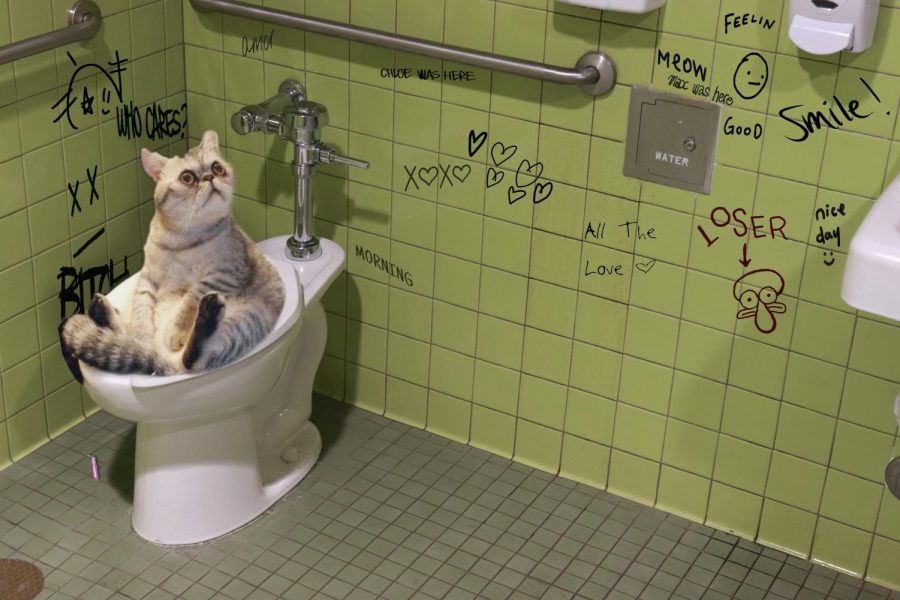Don't Flush Cat Poop Down Your Toilet - Maintain Your House's Pipe System
Don't Flush Cat Poop Down Your Toilet - Maintain Your House's Pipe System
Blog Article
What're your insights and beliefs about Don’t flush cat feces down the toilet?

Introduction
As cat owners, it's essential to bear in mind just how we deal with our feline close friends' waste. While it may seem hassle-free to flush feline poop down the bathroom, this technique can have destructive consequences for both the environment and human health.
Alternatives to Flushing
Fortunately, there are more secure and much more responsible ways to dispose of pet cat poop. Consider the adhering to options:
1. Scoop and Dispose in Trash
The most usual technique of getting rid of feline poop is to scoop it into a biodegradable bag and throw it in the trash. Be sure to utilize a devoted litter scoop and get rid of the waste promptly.
2. Usage Biodegradable Litter
Go with naturally degradable pet cat litter made from products such as corn or wheat. These trashes are environmentally friendly and can be safely taken care of in the garbage.
3. Hide in the Yard
If you have a yard, think about hiding cat waste in an assigned location far from vegetable yards and water resources. Be sure to dig deep sufficient to stop contamination of groundwater.
4. Install a Pet Waste Disposal System
Invest in a family pet waste disposal system especially created for feline waste. These systems utilize enzymes to break down the waste, lowering odor and environmental effect.
Health Risks
Along with environmental problems, flushing feline waste can likewise present wellness threats to humans. Pet cat feces may have Toxoplasma gondii, a bloodsucker that can cause toxoplasmosis-- a potentially extreme health problem, specifically for pregnant ladies and people with weakened immune systems.
Ecological Impact
Flushing cat poop presents dangerous microorganisms and bloodsuckers right into the water, positioning a substantial threat to water environments. These pollutants can negatively influence marine life and compromise water high quality.
Final thought
Accountable animal ownership prolongs beyond supplying food and sanctuary-- it additionally involves proper waste management. By avoiding flushing pet cat poop down the bathroom and going with different disposal methods, we can minimize our environmental impact and shield human health and wellness.
Why Can’t I Flush Cat Poop?
It Spreads a Parasite
Cats are frequently infected with a parasite called toxoplasma gondii. The parasite causes an infection called toxoplasmosis. It is usually harmless to cats. The parasite only uses cat poop as a host for its eggs. Otherwise, the cat’s immune system usually keeps the infection at low enough levels to maintain its own health. But it does not stop the develop of eggs. These eggs are tiny and surprisingly tough. They may survive for a year before they begin to grow. But that’s the problem.
Our wastewater system is not designed to deal with toxoplasmosis eggs. Instead, most eggs will flush from your toilet into sewers and wastewater management plants. After the sewage is treated for many other harmful things in it, it is typically released into local rivers, lakes, or oceans. Here, the toxoplasmosis eggs can find new hosts, including starfish, crabs, otters, and many other wildlife. For many, this is a significant risk to their health. Toxoplasmosis can also end up infecting water sources that are important for agriculture, which means our deer, pigs, and sheep can get infected too.
Is There Risk to Humans?
There can be a risk to human life from flushing cat poop down the toilet. If you do so, the parasites from your cat’s poop can end up in shellfish, game animals, or livestock. If this meat is then served raw or undercooked, the people who eat it can get sick.
In fact, according to the CDC, 40 million people in the United States are infected with toxoplasma gondii. They get it from exposure to infected seafood, or from some kind of cat poop contamination, like drinking from a stream that is contaminated or touching anything that has come into contact with cat poop. That includes just cleaning a cat litter box.
Most people who get infected with these parasites will not develop any symptoms. However, for pregnant women or for those with compromised immune systems, the parasite can cause severe health problems.
How to Handle Cat Poop
The best way to handle cat poop is actually to clean the box more often. The eggs that the parasite sheds will not become active until one to five days after the cat poops. That means that if you clean daily, you’re much less likely to come into direct contact with infectious eggs.
That said, always dispose of cat poop in the garbage and not down the toilet. Wash your hands before and after you clean the litter box, and bring the bag of poop right outside to your garbage bins.
https://trenchlesssolutionsusa.com/why-cant-i-flush-cat-poop/

We were guided to that editorial on Don’t flush cat feces down the toilet from a good friend on a different domain. Enjoyed our entry? Please share it. Help somebody else find it. Thank you for your time invested reading it.
Click Here Report this page